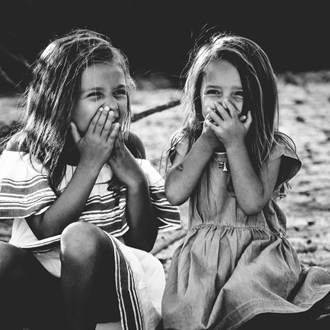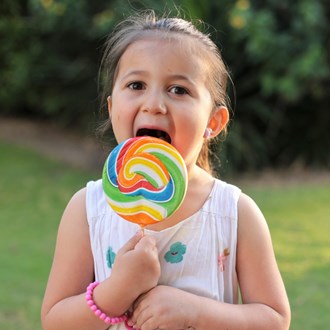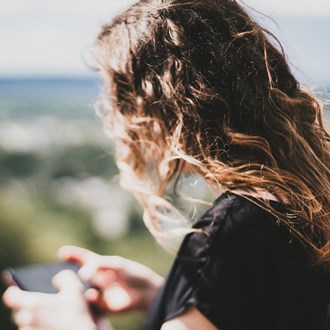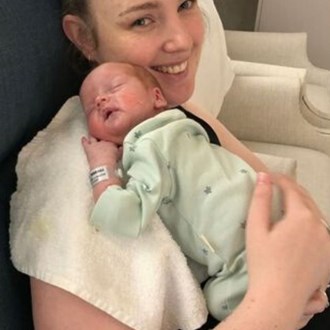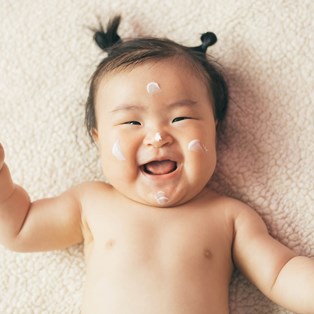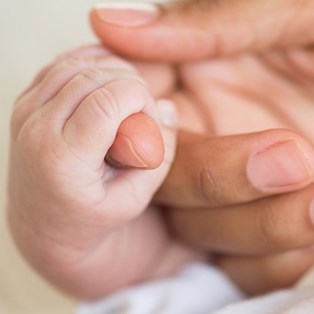Baby acne: should you be worried about newborn pimples?
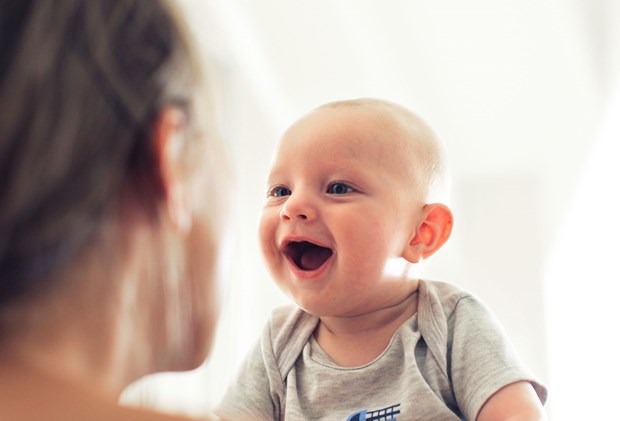
Everything you need to know about neonatal acne
What is baby acne?
If you thought blemishes only affected teenagers and adults, think again! Baby pimples or acne, also known as neonatal acne, is a common and temporary skin condition that develops on a baby’s face or body.
It occurs in about 20 per cent of newborns but the good news is that in almost all cases, the acne will resolve on its own without treatment.
Baby acne differs from infantile acne in that open comedones, or blackheads, don’t usually appear in baby acne. These symptoms are common in infantile acne. Infantile acne may also appear as cysts or nodules. In rare cases, it can leave scars if it is not treated.
Baby acne only happens in your baby’s first couple of months of a baby’s life, whereas infantile acne can last until your child is two years old. However, infantile acne is much less common than baby acne.
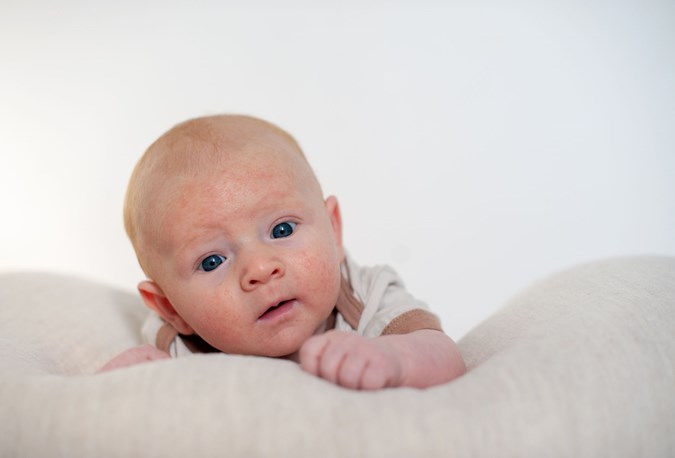
Getty Images
What causes baby acne?
As with any other type of acne, hormones are believed to be mainly to blame. In the case of newborns, however, it’s not their own hormones but their mother’s hormones, which change during pregnancy.
These maternal hormones stimulate baby's oil-producing glands, causing pimples to pop up.
Also, the pores in a baby's skin are not yet fully developed, making them easy targets for infiltration by dirt and the blossoming of blemishes. And babies usually have very sensitive skin which can also be a factor.
Another cause of baby acne could be an inflammatory reaction to a Malassezia, a common type of yeast that colonises on a baby’s skin, according to some medical experts.
What does baby acne look like?
Baby acne presents in the form of small red or white bumps that can appear all over the body but are usually concentrate on the baby’s cheeks, face, chest and torso.
You may also see tiny white bumps on your newborn’s forehead, cheeks or near his mouth. These are called milia and are sometimes referred to as ‘milk spots’ or ‘milk pimples’.
Milia are caused by a collection of dead cells (keratin) from the top layer of skin getting trapped just below the skin’s surface. The lumps are usually less than 1mm across, but they can measure up to 3mm.
Infant acne can manifest as a crop or cluster of raised red bumps, sometimes filled with pus, and can appear anywhere on the body. Sometimes they disappear on their own but occasionally they may need treatment in order to prevent scarring.
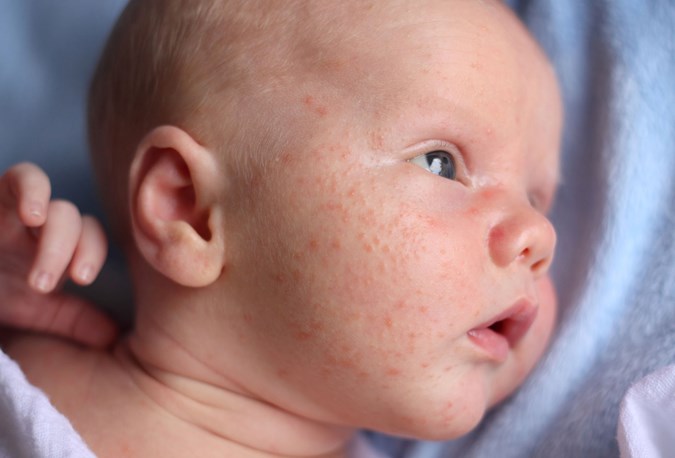
Getty Images
What are the treatment options for baby acne?
While there’s no ‘cure’ for baby acne, generally it should resolve without any need for treatment. However there are a few things you can do to ensure you don’t exacerbate the problem.
• Don’t scrub or pick at the spots. Trying to pop the pimples or otherwise interfere with them can break the skin, introducing bacteria and potentally causing infection.
• Wash and moisturise gently. If your newborn has baby acne, keep his face clean and moisturised. Try using a mild soap and a fragrance-free, hypoallergenic moisturiser to keep the skin healthy and soft. Ensure you gently pat your baby’s skin dry after bathing or washing.
• Try a humidifier. Acne may be exacerbated by dry air, so using a humidifier can ensure that baby’s skin stays hydrated.
• Speak to your GP or paediatrician. In extreme circumstances your healthcare professional may prescribe medication, like Retin-A or something with benzoyl peroxide. This is usually only in severe cases where there is a risk of scarring if the problem is left untreated.
Are there any natural remedies for baby acne?
If you’re keen to try natural ways to resolve your baby’s acne, here are a few things you can try.
• Use coconut oil as a moisturiser. Add a few drops to a cotton ball and swab over baby’s face to help hydrate the skin.
• Wipe with a few drops of breast milk. Wiping your baby’s skin with a few drops of breastmilk and then allowing it to air dry may help, as breast milk contains lauric acid, which has antibacterial and anti-inflammatory characteristics.
• Alter your diet. If you’re breastfeeding, speak with your healthcare practitioner to see if reducing or eliminating certain foods, such as dairy or citrus, may help. While they may be causing baby acne, omitting them from your diet may help improve baby’s overall skin condition.

Getty Images
How long does baby acne last?
Baby acne usually resolves without treatment after a few days or weeks, but in some cases may last a couple of months. If it lasts longer than a few months, see your GP or paediatrician.
Does baby acne cause any long-term damage?
Although it may look a little unsightly, baby acne is completely harmless and resolves by itself. However, if it persists or is causing your baby discomfort you should see your GP as in some severe cases it may become infected and/or cause scarring.
When should I seek medical advice for baby acne?
A general check-up is a good time to ask your GP or child nurse questions about baby acne, and discuss any other concerns you may have about your baby’s health.
See a doctor immediately if your baby’s acne results in blackheads, pus-filled bumps, or inflammation. If your baby seems to be in pain or discomfort you should also see your GP as soon as possible.
If your baby’s acne doesn’t clear up by itself after a few months, your GP may recommend using an infant-friendly dose of benzoyl peroxide lotion.
In rare cases, an antibiotic may be prescribed so that your baby is not left with permanent scarring. However, this is usually only necessary for severe acne caused by an underlying medical condition.

Nicola Conville has worked as a journalist and editor for more than 20 years across a wide range of print and online publications. Her areas of expertise are parenting, health and travel. She has two children; Lucy, age eight, and Nathan, age five.

